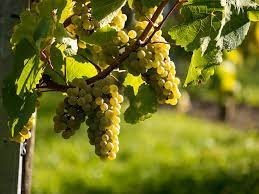
Gamay
Gamay is a light-bodied red wine known for its fruity flavors and vibrant acidity.
All About Gamay
Appearance
- Color: Gamay wines typically have a bright ruby color with hints of violet.
- Opacity: These wines are generally light to medium in opacity, reflecting their lighter style and freshness.
Aroma
- Primary Aromas: Red fruits such as cherry, raspberry, and cranberry, along with floral notes like violet and peony.
- Secondary Aromas: Spicy undertones of black pepper, cinnamon, and herbal notes like potting soil.
- Tertiary Aromas: With aging, Gamay can develop subtle earthy notes and a hint of baking spices
Flavor Profile
- Fruit Flavors: Prominent flavors of red berries, including strawberries, raspberries, and cherries. Pomegranate and blackberry bramble are also common.
- Other Flavors: Light floral notes, earthy undertones, and sometimes a hint of banana or bubblegum, especially in Beaujolais Nouveau.
- Oak Influence: Gamay wines are typically unoaked, which helps to maintain their fresh, fruit-forward profile.
Structure
- Body: Light to medium-bodied.
- Tannins: Low tannins, which makes the wine smooth and easy to drink.
- Acidity: Medium-high acidity, contributing to the wine’s refreshing and crisp character.
- Alcohol: Generally low, ranging from 10% to 11.5%
Join the club
Get this varietal often & more delivered to your doorstep when you join our wine club!
-
Classic Series Membership
Regular price From $39.00Regular priceUnit price / per -
Vintners Series Membership
Regular price From $42.00Regular priceUnit price / per -
Limited Series Membership
Regular price From $52.00Regular priceUnit price / per
Pairings for Gamay

Roasted Chicken or Duck
Roasted chicken and duck are both rich and flavorful dishes, with chicken offering a mild and savory profile, and duck delivering a more robust, slightly gamey flavor. The crisp skin and tender meat, especially in roasted preparations, call for wines that can balance their richness. Whether it's the bright acidity of a Pinot Noir enhancing the savoriness of roasted chicken or the deeper flavors of a Merlot complementing the richer duck, these dishes require wines with enough complexity and structure to enhance the experience without overpowering the meat's natural flavors.

Aged Cheeses and Charcuterie
Aged cheeses and charcuterie offer rich, bold flavors, often with a savory and umami profile. Aged cheeses like cheddar, Parmigiano-Reggiano, and Gouda develop complex, nutty, and slightly salty flavors, while charcuterie—featuring cured meats like prosciutto, salami, and chorizo—adds a fatty, savory depth. When paired with wines, the combination of high-fat content in the cheese and the saltiness of cured meats calls for wines with good acidity and tannins, helping to balance and enhance the richness of the food.

Vegetarian Dishes
Vegetarian dishes, ranging from light salads to hearty vegetable stews, offer a diverse array of flavors and textures. Whether it’s grilled vegetables, earthy mushrooms, or sweet roasted vegetables, these meals are anything but simple. The key to wine pairing with vegetarian food is finding a balance between the wine's acidity, body, and flavor intensity. Lighter, more delicate dishes pair well with crisp, high-acid whites, while richer dishes like mushroom-based meals or roasted vegetables complement fuller-bodied reds
Popular Locations for Gamay

France




